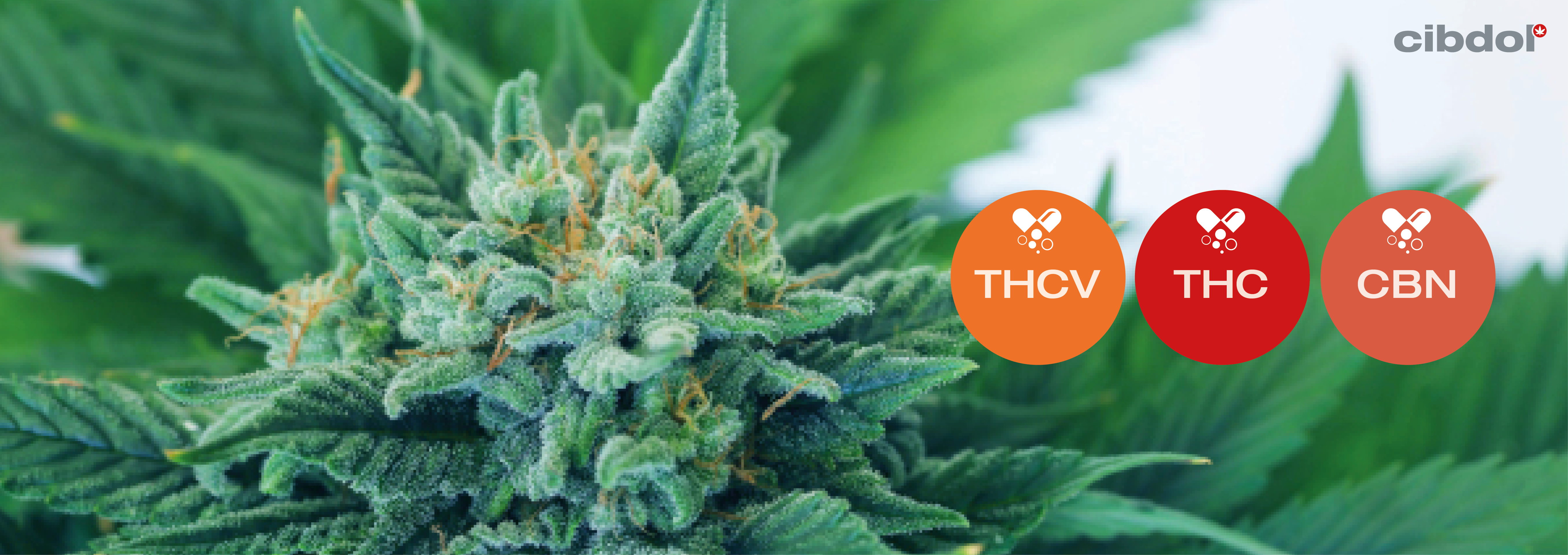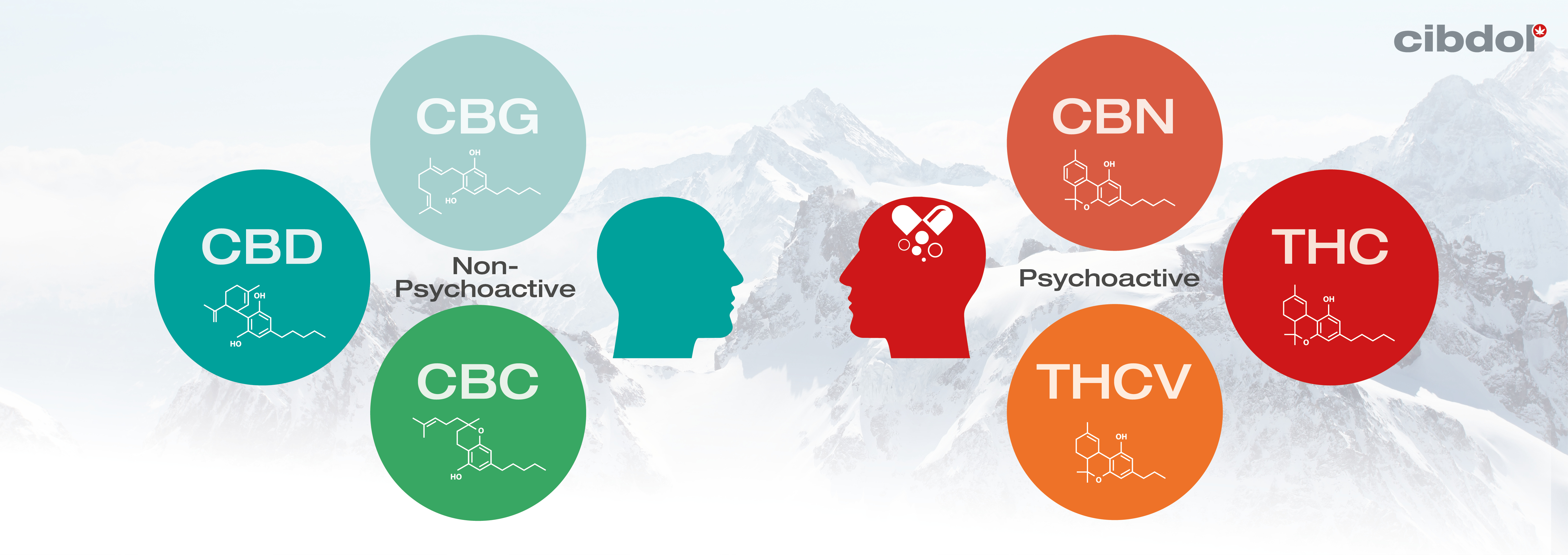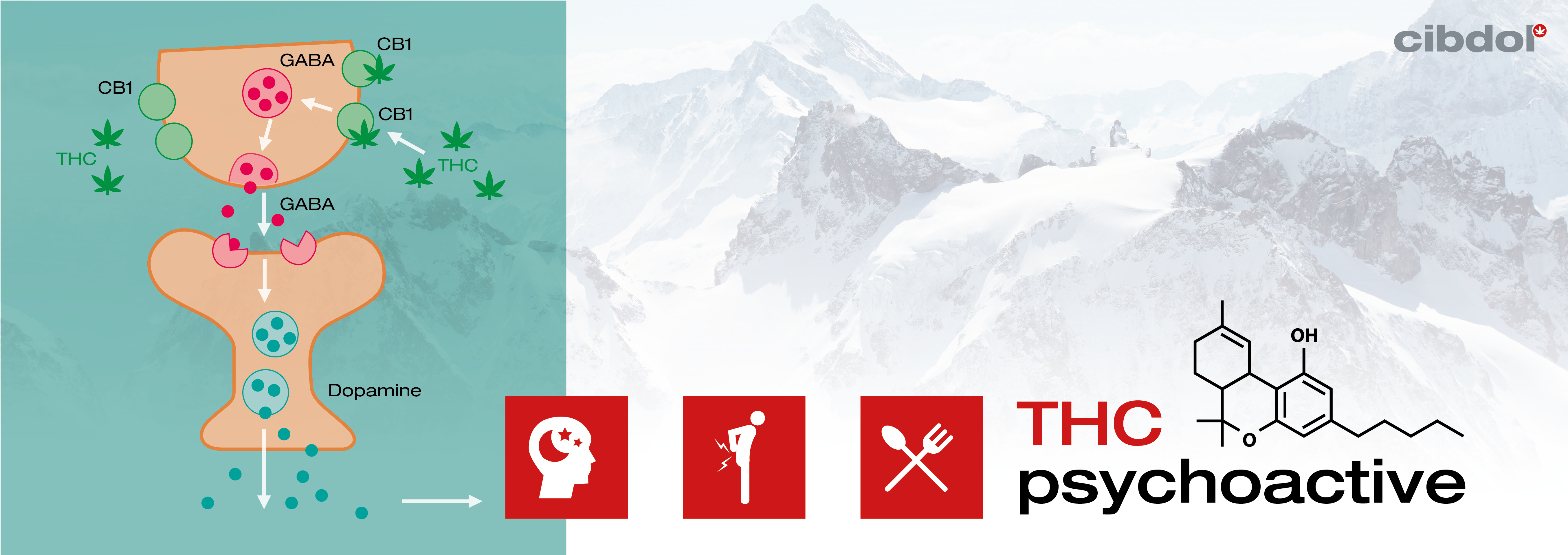Which Cannabinoids Are Psychoactive

Cannabinoids are some of the primary chemical constituents found within the cannabis plant. This family of molecules earned their name due to their ability to bind to—or indirectly affect—the cannabinoid receptors of the endocannabinoid system.
Researchers have identified over 100 cannabinoids within the cannabis plant. These fascinating molecules also exist elsewhere in the plant kingdom. Early research has identified impressive potential, and each cannabinoid appears to work in slightly different ways. For example, some cannabinoids produce psychoactive effects. In this article, we’ll explore which cannabinoids cause a change in consciousness and how they achieve this.
Introducing the major cannabinoids

Cannabinoids appear in different quantities depending on the genetics of a particular cultivar. Some strains are much higher in THC, whereas others are dominant in CBD. Breeders have even developed strains that produce high levels of CBG. As more research emerges, growers will likely start breeding strains to express high levels of any of the 100+ other cannabinoids discovered so far.
Although dozens of these interesting molecules exist, several of them appear in much higher concentrations than others. These are the major cannabinoids. Get to know them briefly below.
• THC is the primary cannabinoid in many selectively bred varieties of cannabis. THC binds to both the CB1 and CB2 receptors of the endocannabinoid system. Early research[1] suggests the molecule possesses a range of scientifically significant effects. When consumed, THC induces mood-enhancing and appetite-stimulating properties, among others.
• CBD is the second-most-abundant cannabinoid within most cannabis strains, and the most abundant within hemp. CBD provides a clear-headed and subtly relaxing effect in most users. The cannabinoid only has a low affinity for cannabinoid receptors, yet influences the endocannabinoid system through indirect mechanisms. Medical researchers are eagerly researching the cannabinoid for its therapeutic potential, and results thus far have been promising. For that reason, CBD has become a popular dietary supplement and topical.
• CBGA is the chemical precursor to many cannabinoids, including CBG, which appears in relatively low concentrations in most strains. However, breeders have recently started to create strains expressing a CBG content of 100%. The molecule binds to both CB1 and CB2 receptors, but only to a limited degree. Researchers have so far identified a few compelling traits, such as a beneficial effect on low mood.
• CBC makes up around 0.3% of the cannabinoid content of most strains, with some selectively bred varieties expressing a much higher value. The molecule activates CB2 receptors but shows little activity at CB1 receptor sites. Researchers have found CBC to potentially contribute towards healthy brain function.
• CBN is a molecule cannabis plants don’t produce directly. Instead, the chemical occurs as a result of THC degradation. Early animal and human research demonstrates a couple properties unique to CBN, alongside effects commonly shared among all major cannabinoids. It appears to achieve its effects through CB1 and CB2 receptor activation.
• THCV is an analogue of THC that usually occurs in low quantities, yet some strains feature up to 16% of the cannabinoid. It tends to occur in larger amounts in South African sativa varieties. THCV both blocks and activates the CB1 receptor, depending on the dose. The cannabinoid has demonstrated an ability to decrease swelling and related issues, and several studies document a weight loss and fat-burning effect.
Which cannabinoids are psychoactive?

Not all major cannabinoids are psychoactive. For a cannabinoid to produce psychoactive effects, it must first meet one prerequisite: CB1 receptor activation. Upon binding to the CB1 receptor, cannabinoids trigger chemical changes within the central nervous system. These effects often cause a change in dopamine level, boost the appetite, and elevate the mood. THC, CBN, and THCV all produce varying degrees of psychoactivity based on this mechanism.
CBG appears to only interact with CB1 to a very limited degree, which excludes it from the “psychoactive” pack. As research[2] published in Frontiers in Pharmacology states, “The effect of CBG on CB1R was measurable but the underlying molecular mechanisms remain uncertain”.
Then, of course, there is CBD, which is non-psychoactive as it doesn't bind to the CB1 receptor. In fact, CBD may even tame[3] some of THC's psychoactive effects when the two cannabinoids are administered together.
Given its low affinity for CB1 receptors, CBC is also widely believed to be non-psychoactive.
As the main psychoactive constituent within marijuana, THC produces most of the mind-altering effects of the plant. These usually include relaxation, short-term memory recall issues, elation, and possible short-term paranoia.
CBN also binds to the CB1 receptor. However, the molecule’s psychoactive effects are different than those induced by THC. The cannabinoid produces a more gentle and sedating effect. CBN may even be able to reduce some of the more negative effects of THC.
Finally, THCV also catalyses a consciousness-shifting effect. However, this cannabinoid works on quite a different basis. By blocking the CB1 receptor, THCV may effectively reduce the negative effects of THC, such as panic attacks. However, by activating the same site, THCV may produce its own psychoactive effect. However, it is too early to describe THCV’s specific effect with confidence.
Summary
Put simply, major cannabinoids that latch onto the CB1 receptor are likely to produce a psychoactive effect. Those that block the receptor—or don’t interact with it directly—do not. Users select cannabinoids such as CBD and CBG for their lack of psychoactivity and clear-headed effects. So far, researchers have identified THC, CBN, and THCV as the major psychoactive components of the cannabis plant.
[1] Russo, E. B., & Marcu, J. (2017). Cannabis Pharmacology: The Usual Suspects and a Few Promising Leads. Cannabinoid Pharmacology, 67–134. https://doi.org/10.1016/bs.apha.2017.03.004 [Source]
[2] Navarro, G., Varani, K., Reyes-Resina, I., Sánchez De Medina, V., Rivas-Santisteban, R., Sánchez-Carnerero Callado, C., Vincenzi, F., Casano, S., Ferreiro-Vera, C., Canela, E. I., Borea, P. A., Nadal, X., & Franco, R. (2018). Cannabigerol Action at Cannabinoid CB1 and CB2 Receptors and at CB1–CB2 Heteroreceptor Complexes. Frontiers in Pharmacology, 9. https://doi.org/10.3389/fphar.2018.00632 [Source]
[3] Russo, E. B. (2011). Taming THC: potential cannabis synergy and phytocannabinoid-terpenoid entourage effects. British Journal of Pharmacology, 163(7), 1344–1364. https://doi.org/10.1111/j.1476-5381.2011.01238.x [Source]
[1] Russo, E. B., & Marcu, J. (2017). Cannabis Pharmacology: The Usual Suspects and a Few Promising Leads. Cannabinoid Pharmacology, 67–134. https://doi.org/10.1016/bs.apha.2017.03.004 [Source]
[2] Navarro, G., Varani, K., Reyes-Resina, I., Sánchez De Medina, V., Rivas-Santisteban, R., Sánchez-Carnerero Callado, C., Vincenzi, F., Casano, S., Ferreiro-Vera, C., Canela, E. I., Borea, P. A., Nadal, X., & Franco, R. (2018). Cannabigerol Action at Cannabinoid CB1 and CB2 Receptors and at CB1–CB2 Heteroreceptor Complexes. Frontiers in Pharmacology, 9. https://doi.org/10.3389/fphar.2018.00632 [Source]
[3] Russo, E. B. (2011). Taming THC: potential cannabis synergy and phytocannabinoid-terpenoid entourage effects. British Journal of Pharmacology, 163(7), 1344–1364. https://doi.org/10.1111/j.1476-5381.2011.01238.x [Source]












